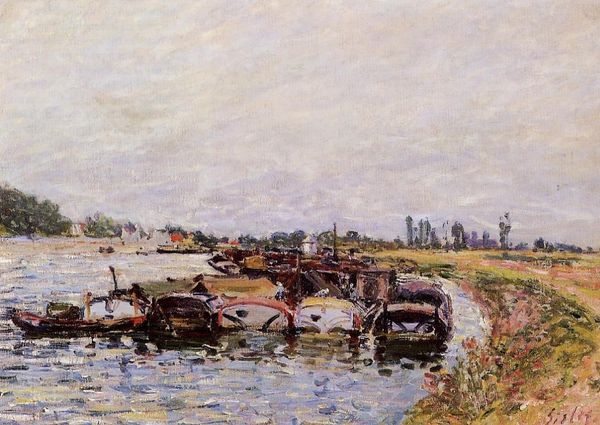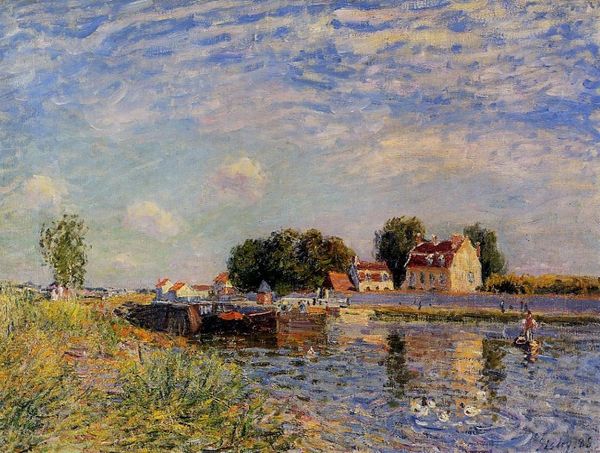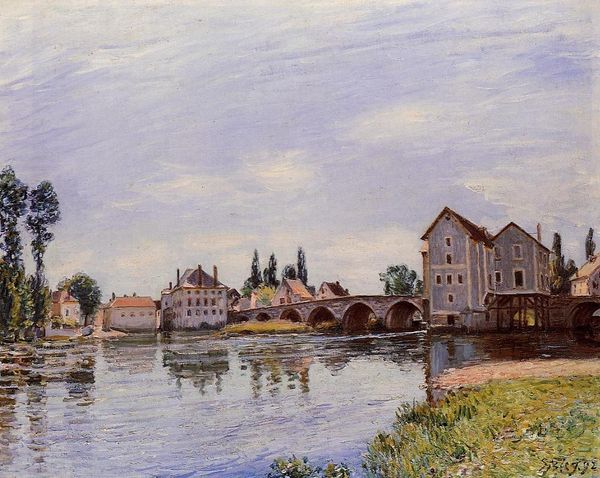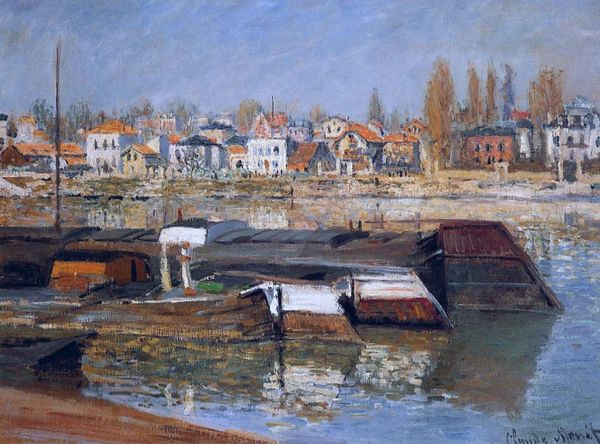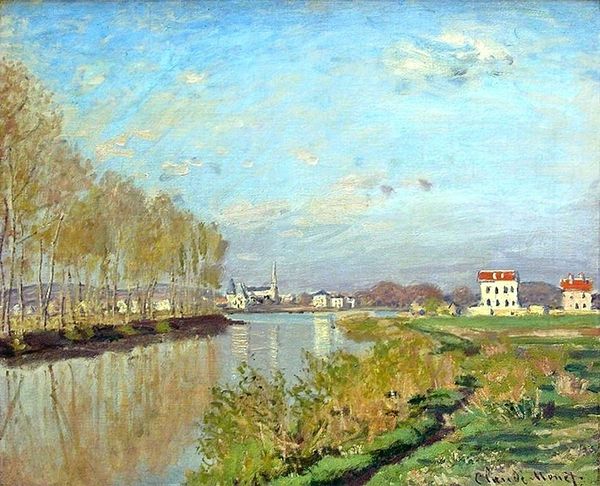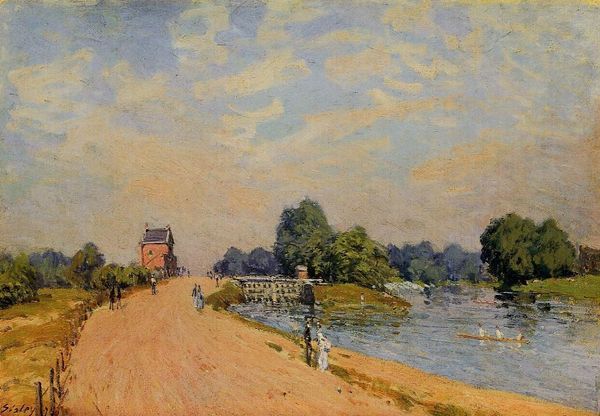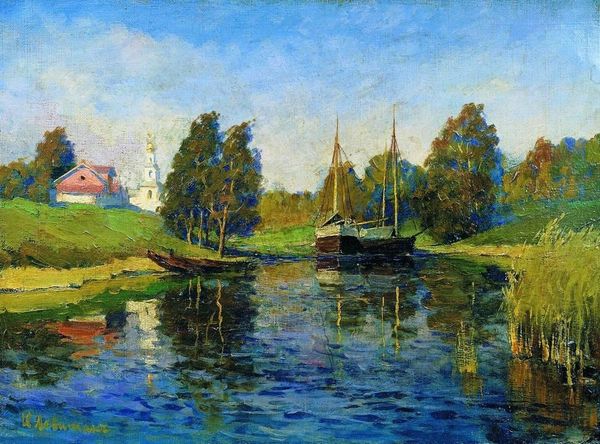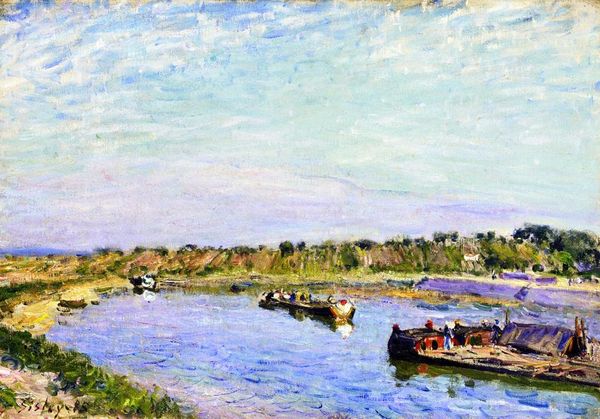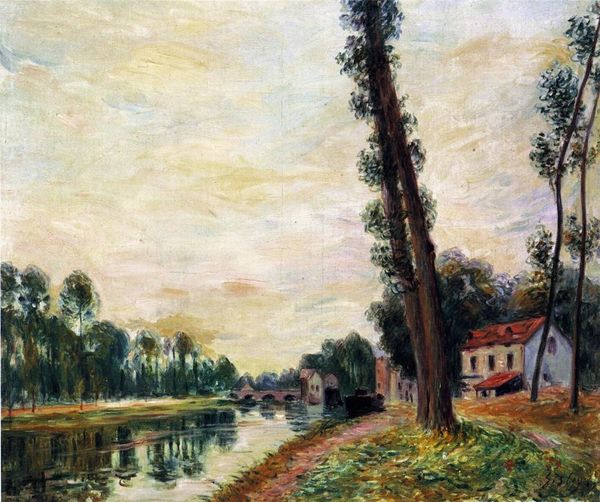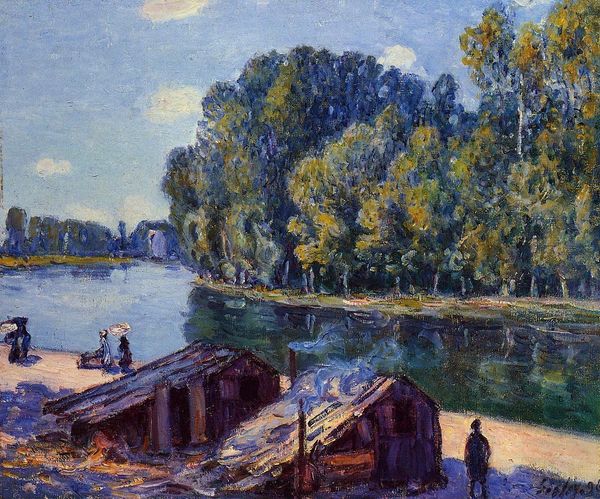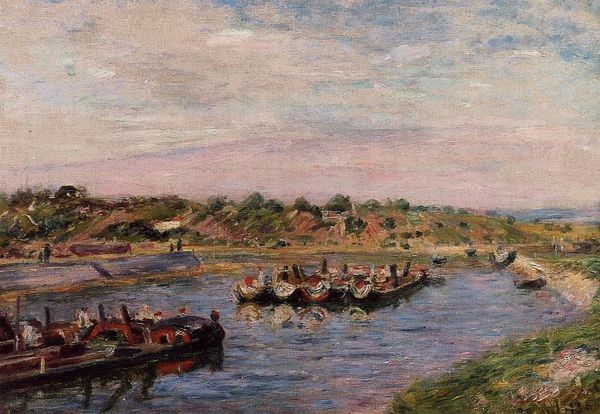
painting, plein-air, oil-paint
#
painting
#
impressionism
#
plein-air
#
oil-paint
#
landscape
#
river
#
oil painting
#
city scape
#
water
#
cityscape
Copyright: Public domain
Editor: We’re looking at Gustave Caillebotte's “The Pontoon at Argenteuil,” an oil on canvas from 1886, held in a private collection. The stillness of the water and the muted palette give it such a serene feeling. What strikes you when you look at it? Curator: The pontoon itself, and its function, become the key to understanding the symbolism. It's not simply a building on water. Notice the sign that reads, "Location de Canots"--Canoe Rental. Water has been a consistent symbolic force across millennia and cultures. What feelings are evoked in you when you see images of boats and water? Editor: Freedom? Escape? Maybe even a bit of anxiety… being adrift. Curator: Precisely! And the pontoon, the boat rental, is the interface between that sense of freedom and the familiar safety of the shore. Think about the individual psychology of recreation and leisure that’s emerging at the time. Editor: So, it's not just about pretty scenery. It represents that cultural moment where people had the time and resources for leisure. The pontoon facilitates that. Curator: Yes, and consider the reflections in the water. It’s more than just light and shadow, but also of how we perceive our reflection, our selves. In this regard, it's more than just boats bobbing up and down the Seine. What do the flags remind you of? Editor: Patriotism? Perhaps the rise of nationalism during that era? Curator: Exactly. Caillebotte isn’t merely capturing a scene; he's capturing a turning point in French society and exploring the nuances of leisure and national identity. Editor: I see it now! There's so much more to unpack here than just a tranquil riverside scene. Thanks for helping me see those deeper layers. Curator: My pleasure! It's about looking at what endures, the repeating themes and structures that give us clues.
Comments
No comments
Be the first to comment and join the conversation on the ultimate creative platform.

